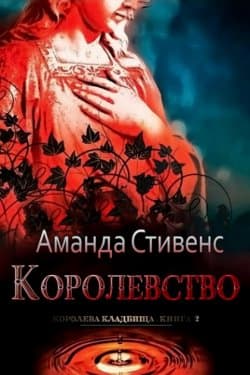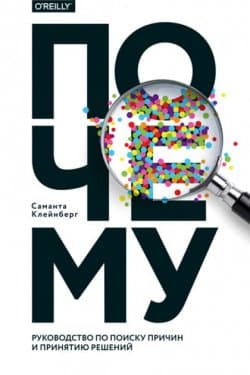Почему - Саманта Клейнберг (2017)
-
Год:2017
-
Название:Почему
-
Автор:
-
Жанр:
-
Язык:Русский
-
Страниц:160
-
Рейтинг:
-
Ваша оценка:
Автор показывает, что такое причинно-следственная связь, поясняет, почему в ее определении мы часто ошибаемся, как можно принимать верные решения. Благодаря этой книге вы научитесь анализировать информацию, выявлять причинно-следственные связи, объединять прошлое, предсказывать будущее.
Книга будет интересна философам, аналитикам, экономистам, медикам, юристам, начинающим ученым.
Почему - Саманта Клейнберг читать онлайн бесплатно полную версию книги
Dumanovsky, T., Huang, C. Y., Nonas, C. A., Matte, T. D., Bassett, M. T., and Silver, L. D. (2011). Changes in energy content of lunchtime purchases from fast food restaurants after introduction of calorie labelling: Cross sectional customer surveys. BMJ, 343: d4464.
Dwyer, M. (2013). Coffee drinking tied to lower risk of suicide. Harvard Gazette.
Eells, E. (1991). Probabilistic Causality. Cambridge University Press, Cambridge.
Efron, B. (2010). Large-Scale Inference: Empirical Bayes Methods for Estimation, Testing, and Prediction. Institute of Mathematical Statistics Monographs. Cambridge University Press, Cambridge.
Eichler, M. (2010). Graphical Gaussian Modelling of Multivariate Time Series with Latent Variables. In Proceedings of the 13th International Conference on Artificial Intelligence and Statistics.
Einstein, A., Podolsky, B., and Rosen, N. (1935). Can Quantum-Mechanical Description of Physical Reality Be Considered Complete? Physical Review, 47(10): 777–780.
Elbel, B., Kersh, R., Brescoll, V. L., and Dixon, L. B. (2009). Calorie Labeling And Food Choices: A First Look At The Effects On Low-Income People In New York City. Health Affairs, 28(6):w 1110–w1121.
Ellison, B., Lusk, J. L., and Davis, D. (2014). The Effect of Calorie Labels on Caloric Intake and Restaurant Revenue: Evidence from Two Full-Service Restaurants. Journal of Agricultural and Applied Economics, 46(2): 173–191.
Entner, D. and Hoyer, P. O. (2010). On Causal Discovery from Time Series Data using FCI. In Proceedings of the 5th European Workshop on Probabilistic Graphical Models.
Erickson, J. D. (1978). Down syndrome, paternal age, maternal age and birth order. Annals of Human Genetics, 41(3): 289–298.
Erlwein, O., Kaye, S., McClure, M. O., Weber, J., Wills, G., Collier, D., Wessely, S., and Cleare, A. (2010). Failure to Detect the Novel Retrovirus XMRV in Chronic Fatigue Syndrome. PloS ONE, 5(1): e8519.
Faro, D., McGill, A. L., and Hastie, R. (2013). The influence of perceived causa-tion on judgments of time: An integrative review and implications for decision-making. Frontiers in Psychology, 4: 217.
Fewtrell, M. S., Kennedy, K., Singhal, A., Martin, R. M., Ness, A., Hadders-Algra, M., Koletzko, B., and Lucas, A. (2008). How much loss to follow-up is acceptable in long-term randomised trials and prospective studies? Archives of Disease in Childhood, 93(6): 458–461.
Fischer, D. A. (1992). Causation in Fact in Omission Cases. Utah Law Review, pp. 1335–1384.
Fischer, D. A. (2006). Insufficient Causes. Kentucky Law Journal, 94: 277–37.
Fisher, R. A. (1925). Statistical Methods for Research Workers. Oliver and Boyd, Edinburgh.
Fitelson, B. and Hitchcock, C. (2011). Probabilistic measures of causal strength. In P. M. Illari, F. Russo, and J. Williamson (eds.), Causality in the Sciences, pp. 600–627. Oxford University Press, Oxford.
Fleming, P. J., Blair, P., Bacon, P., and Berry, J. (eds.) (2000). Sudden unexpected deaths in infancy: The CESDI SUDI studies 1993–1996. The Stationery Office, London.
Fowler, J. H. and Dawes, C. T. (2008). Two Genes Predict Voter Turnout. The Journal of Politics, 70(3): 579–594.
Frank, S. A., Wilson, R., Holloway, R. G., Zimmerman, C., Peterson, D. R., Kieburtz, K., and Kim, S. Y. H. (2008). Ethics of sham surgery: Perspective of patients. Movement Disorders, 23(1): 63–68.
Freedman, D. and Humphreys, P. (1999). Are There Algorithms That Discover Causal Structure? Synthese, 121(1–2): 29–54.
Fugelsang, J. A. and Thompson, V. A. (2003). A dual-process model of belief and evidence interactions in causal reasoning. Memory & Cognition, 31(5): 800–815.
Fumerton, R. and Kress, K. (2001). Causation and the Law: Preemption, Lawful Sufficiency, and Causal Sufficiency. Law and Contemporary Problems, 64(4): 83–105.
 Почему они не работают? Новый взгляд на мотивацию сотрудников Сьюзен Фаулер
Почему они не работают? Новый взгляд на мотивацию сотрудников Сьюзен Фаулер
 Королевство Аманда Стивенс
Королевство Аманда Стивенс
 Почему Саманта Клейнберг
Почему Саманта Клейнберг
 Момент истины. Почему мы ошибаемся, когда все поставлено на карту, и что с этим делать? Сайен Бейлок
Момент истины. Почему мы ошибаемся, когда все поставлено на карту, и что с этим делать? Сайен Бейлок
 Почему. Руководство по поиску причин и принятию решений Саманта Клейнберг
Почему. Руководство по поиску причин и принятию решений Саманта Клейнберг
 Здравый смысл врет. Почему не надо слушать свой внутренний голос Уоттс Дункан
Здравый смысл врет. Почему не надо слушать свой внутренний голос Уоттс Дункан

 Пир теней
Пир теней  Князь во все времена
Князь во все времена  Когда порвется нить
Когда порвется нить  Пока я здесь
Пока я здесь 



